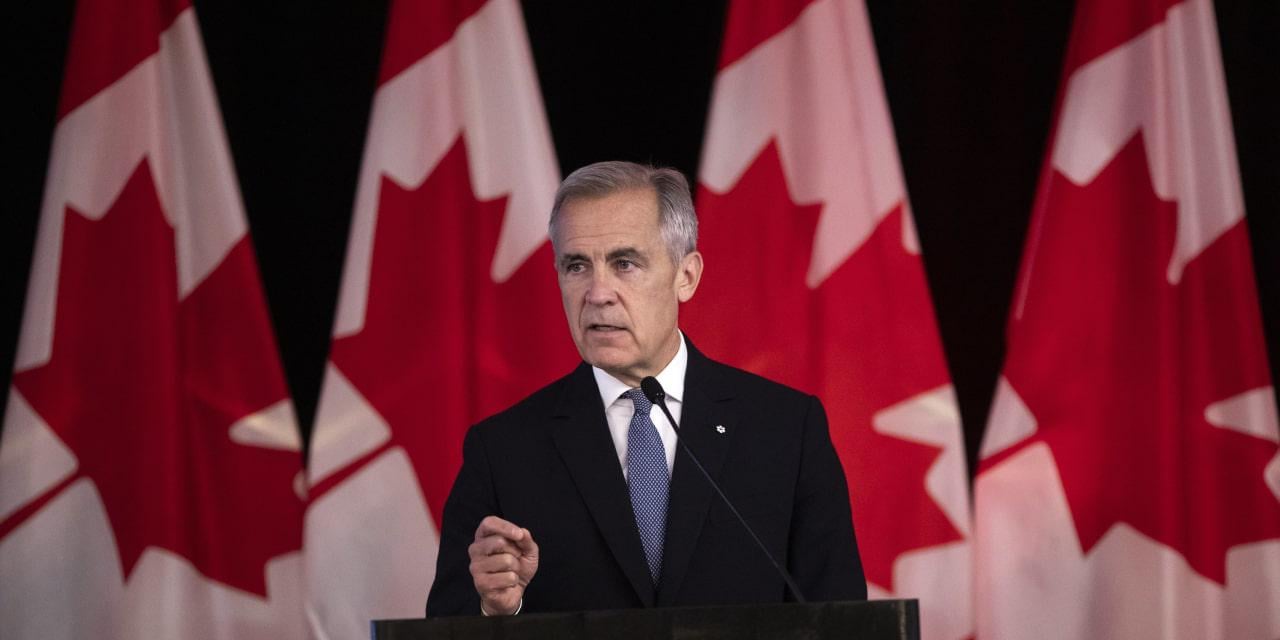
Canadian PM Mark Carney’s Shift From Climate-Change Warrior to Fossil-Fuel Cheerleader
https://www.wsj.com/world/americas/mark-carneys-shift-from-climate-change-warrior-to-fossil-fuel-cheerleader-97d17782?st=y8pzHh
by silence7


Canadian PM Mark Carney’s Shift From Climate-Change Warrior to Fossil-Fuel Cheerleader
https://www.wsj.com/world/americas/mark-carneys-shift-from-climate-change-warrior-to-fossil-fuel-cheerleader-97d17782?st=y8pzHh
by silence7
4 comments
Fact-check / context & caveats
Here’s what holds up, what is uncertain, and what deserves nuance.
What is well-supported
1. Carney’s climate advocacy prior to becoming prime minister
• Carney has a documented history of speaking on climate risk, sustainable finance, and environmental regulation (e.g. while governor of the Bank of England, his “Tragedy of the Horizon” speech) .
• He served as U.N. Special Envoy on Climate Action and Finance. 
• He was involved in founding / co-leading the Glasgow Financial Alliance for Net Zero (GFANZ) .
2. Carney’s entry into Canadian politics and policy moves
• He won the Liberal Party leadership in March 2025 and became Prime Minister. 
• Reports confirm he has advocated for a new oil pipeline to the West Coast, and a large carbon capture system for the Alberta oil sands. 
• He has signaled intention to reverse or slow down certain green policies (e.g. the carbon tax) and to promote fossil fuel infrastructure. 
3. Challenges in meeting emissions targets
• The article’s claim that Canada is likely to miss its 2030 emissions goals is commonly echoed in climate-policy analysis and think tank reporting.
• The feasibility of CCS (carbon capture & storage) and the concept of “decarbonized oil” are controversial and often critiqued in environmental literature as insufficient or risky.
What requires caution / is uncertain or contested
1. Magnitude of the policy reversals
• The article claims that Carney “dismantled many green policies” including “canceling the carbon tax” and “pausing EV mandates.” While there is reporting that he intends to remove or alter such policies, it would need checking how far these changes have already been enacted. Some may be proposals or early legislative changes, not fully implemented reversals.
2. The scale of the LNG expansion / Kitimat project
• The article’s numbers (28 million tons per year, being second-largest LNG exporter) are ambitious. It should be verified whether the Shell-led expansion at Kitimat has reached such projected scales and secured all regulatory and market approvals.
3. “About-face” framing
• The narrative of a stark reversal (“from warrior to cheerleader”) is rhetorically strong, but the reality may be more of a recalibration or shift in emphasis under political constraints rather than total abandonment of climate goals. Political leaders often recalibrate once in office.
4. Effectiveness of CCS / “decarbonized oil”
• Carbon capture is often criticized as expensive, energy-intensive, and limited in scalability. Many experts argue it cannot compensate for continued large-scale fossil fuel use.
• The term “decarbonized oil” is contested — oil by definition leads to emissions when combusted, so the idea rests on offsetting or mitigating those emissions rather than eliminating them entirely.
5. Political pressures and motives
• The article emphasizes political pressures (Alberta, secessionist sentiment, economic strain) as driving Carney’s switch. These are plausible motives, but assessing the internal deliberations and decision-making would require access to more insider testimony or primary documents.
Overall assessment
• The WSJ article raises plausible claims and aligns with known reporting about Carney’s ambitions and initial policy steps.
• The core claim — that Carney is shifting from a pro-climate public posture to a more fossil-fuel–friendly policy orientation — is credible given his recent actions and public statements.
• However, the framing is somewhat sensational: policy shifts are underway, but full dismantling is not yet proven in every case.
• Some projections (e.g. for LNG export scale, emissions trajectories) should be treated as speculative or based on optimistic assumptions.
• The success or failure of Carney’s approach (balancing fossil fuels, carbon capture, and emissions targets) remains to be seen, and will depend heavily on implementation, market conditions, and technological advances.
If you like, I can dig into each major claim and trace evidence (e.g. legislative records, project approvals, emissions forecasts) and provide a more detailed fact-check. Do you want me to do that?
I think he’s doing the best he can with what he’s got. I don’t see him advocating for new oil pipe lines, he seems to be placating Smith so she will shut up. It’s not up to him it’s up to the provinces that have to approve pipe lines going through there provinces and B.C. is a big NO, one is enough as far as B.C tax payers are concerned.
I do see the LNG being fast tracked because it’s a fast way to make a lot of money for Canada and is the lessor or two evils, plus deep ports are handy for mineral/other shipping too. I don’t like LNG or any fossil fuels and look forward to the days when they aren’t used for energy anymore but we play the hand that’s deal for now. I have yet to see the perfect political party but he was handed a shitty hand being he has to deal with and compulsive liar in Trump, there is no appeasing him and making over seas deals in months that usually take years is a tall task.
The good ol’ switcheroo! Seems like he’s way worse than his campaign manager.
He was doing the right thing until Alberta votes came into the picture.
Comments are closed.